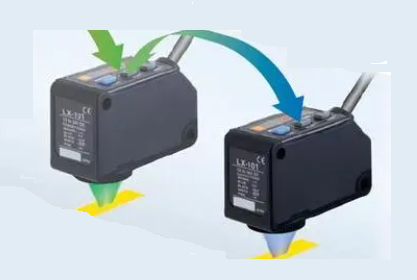In today's environment, there is increasing pressure to manufacture products faster, more accurately and at a lower unit cost. As a result, industrial manufacturers are increasingly trying to find new ways to increase productivity while eliminating any unnecessary costs. To meet these demands, factory automation has been and will continue to be a top priority. This is where optoelectronic optical sensors come in.
Photoelectric sensors enable machine designers to quickly and accurately measure, monitor and control machine functions. High-tech sensors become the eyes of machines, creating specific inputs to control their functions. More importantly, they are also innovative ways to optimize automation requirements, especially sensing surface and distance performance.
Types and applications of photoelectric sensors:
A photosensor is basically an optical device that detects a visible or invisible light beam and responds to changes in the received light intensity. Depending on the needs of the application, the light source can be an LED or a laser.
Photoelectric sensors come in a variety of sizes, sensing modes, and configurations. In addition, they provide solutions for almost every application in industries such as packaging, food processing, semiconductor and material processing.
1. LED sensor
LED sensors are cost-effective and suitable for almost any application. Therefore, LED sensors are one of the most widely used sensors. Applications for these sensors include:

Perceive objects from opaque to transparent
Inspect components in clean to contaminated environments
· Counting parts
Sensing small parts that are not in repeatable positions
Identify parts of different reflectivity and ignore background
Detect parts in a defined depth of field
2. Laser sensor
Laser sensors offer excellent repeatability and performance, especially when using long sensing ranges and narrow beams. In addition, these sensors can be used in the same applications as LED sensors, and they are very effective in high precision measurement requirements.

3. Optical fiber sensor
Fiber optic sensors provide high performance in harsh and extremely constrained sensing environments. Applications for these sensors include:

High vibration and shock resistance
·High temperature, humidity and corrosive environment
·Compact design for tight sensing locations
·Electrical noise
Explosion-proof EMI and RFI
Sensing very small objects
4. Low price
Photoelectric sensors are inexpensive and perform well in challenging environments. In addition, they perform tasks that other "more traditional" sensors cannot, such as color recognition, distance and thickness measurement. Program these highly sensitive sensors to read specific and limited areas, allowing you to experience the highest accuracy. Additionally, these sensors have a long lifespan due to their ability to handle noise/dust/false signals. Improving job performance is the primary goal. High-precision photoelectric sensors help manufacturers optimize productivity while helping customers improve products and processes.

